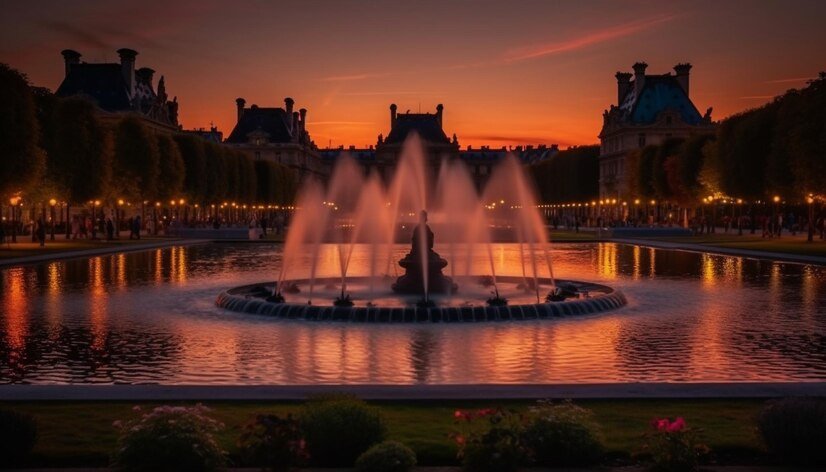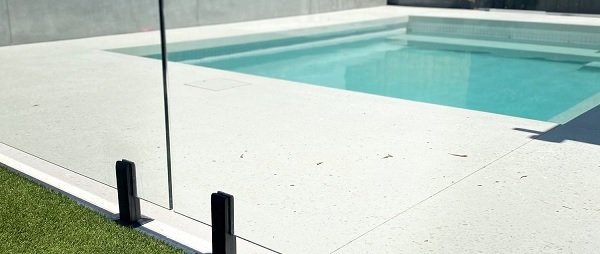Water fountains have fascinated the imagination, for centuries evoking a sense of tranquility, beauty, and awe. These captivating displays of artistry go beyond decorative features; they are true masterpieces that seamlessly blend creativity and engineering. In this article, we will delve into the realm of water fountain design exploring the principles, ingenuity, and craftsmanship that bring these compositions to life.
The Essence of Water Fountain Design
At its core water fountain design is a fusion of creativity, engineering prowess and aesthetic sensibility. It entails orchestrating elements to create a visually captivating spectacle. Here are the key elements that define water fountain design;
Form and Function: A successful fountain design strikes a balance between form and function. It does not need to be visually appealing but functional in terms of efficient water circulation and management.
Aesthetic Appeal: The aesthetic aspect of fountain design involves selecting shapes, materials, and colors that align with the desired theme or ambiance. The ultimate goal is to evoke emotions or complement the surrounding environment.
Understanding Water Dynamics: An understanding of how water behaves is crucial in fountain design. Designers must take into account factors such, as water pressure flow rates and turbulence to achieve their desired effects.
Creating Harmonious Soundscapes: The auditory aspect holds importance well. The sound of flowing water contributes significantly to the atmosphere of the space and designers carefully select water features that create the desired soundscape.
Incorporating lighting: Many modern fountains utilize lighting to enhance their appeal during nighttime. The integration of LEDs and other lighting technologies is an element, in fountain design.
Choosing materials: The selection of materials such as stone, metal, glass, or concrete plays a role in defining the fountain’s character, durability, and maintenance requirements.
Crafting an Ideal Water Fountain
Creating a water fountain that resonates with viewers and blends with its surroundings requires an approach. Here is a step by step guide to crafting the water fountain;
Establish Your Vision: Start by defining your vision for the fountain. Consider its purpose, location, and the emotions or messages you wish to convey. This vision will serve as your guiding compass, throughout the design process.
Analyze the Site; Gain an understanding of the characteristics of the site including space, environmental conditions and existing structures. This analysis will assist you in selecting design elements.
Budget and Resources; Determine your budget limitations and available resources.
Fountain designs can vary greatly in terms of size and cost. It’s important to make design choices that align with your limitations.
First start by developing a concept that combines your vision, site analysis and budget. Sketch out the layout, dimensions and key elements of the fountain.
When it comes to material selection opt, for materials that match your desired aesthetic and complement the environment where the fountain will be placed. Consider factors like durability, maintenance requirements and cost while making your choices.
Collaborate with engineers to design the water circulation system. This involves determining the pumps, pipes and nozzles to control water flow and create desired patterns.
If you plan on incorporating lighting into your fountain design develop a lighting plan that enhances its appeal. Decide on the types of fixtures you want to use as colors and lighting effects to achieve the desired ambiance.
It’s also essential to consider factors. Ensure that your fountain design adheres to regulations and sustainability goals by using energy pumps and exploring water recycling options.
Lastly don’t hesitate to seek collaboration with experts such as architects, landscape designers, hydraulic engineers, or lighting designers. Their expertise will be invaluable in bringing your vision for the fountain design, to life while achieving your goals.
Testing and Adjustments; Once the fountain is installed it’s important to conduct testing to ensure that it aligns with your design specifications. You should be prepared to make any adjustments in order, to fine tune the auditory effects.
Historical and Contemporary Fountain Design Styles
The design of water fountains has evolved throughout the centuries reflecting the architectural trends of eras. Here are some notable styles of fountain design;
Classical Fountains; These fountains draw inspiration from Roman architecture showcasing symmetry, intricate details, and sculptures depicting mythological figures.
Baroque Fountains; During the Baroque period fountains became grand and opulent characterized by elements and elaborate water displays.
Modernist Fountains; Modernist fountains embrace simplicity with lines and minimalistic aesthetics. They often feature shapes and materials such as concrete and steel.
Contemporary Fountains; Contemporary fountain designs are diverse and eclectic. They focus on innovation, and technology as integrating water, light, and sound to create captivating visual displays.
Naturalistic Fountains; These fountains take inspiration from nature itself. They mimic the appearance of streams, waterfalls, or ponds using rocks, boulders, and native plants among other elements.
Conclusion
Designing water fountains is an art that combines creativity, with engineering expertise while considering how water interacts with space.No matter if they are classical, modern or contemporary fountains possess the ability to captivate and inspire transforming areas, gardens and landscapes, into mesmerizing pieces of art. As you begin your adventure in designing a fountain keep in mind that the true essence of a fountain lies not only in its visual appeal but also, in the emotions it evokes and the experiences it provides for those who come across it.





